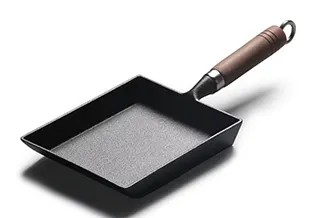
black iron skillet
The Timeless Charm of the Black Iron Skillet
The black iron skillet, often heralded as a kitchen essential, embodies both practicality and tradition, transcending generations of cooks and culinary styles. Its remarkable versatility, durability, and heat retention qualities make it a beloved tool in kitchens around the world, from rustic ones to modern spaces alike.
A Culinary Workhorse
One of the most significant advantages of a black iron skillet is its ability to distribute heat evenly. Whether you’re searing meats, sautéing vegetables, or baking cornbread, this skillet shines. Its heavy base allows for high-heat cooking while maintaining a consistent temperature, which is particularly important when achieving that perfect sear on a steak or a golden-brown crust on baked goods.
Moreover, black iron skillets are remarkably adept at retaining heat. Once heated, they hold their temperatures longer than many other materials. This attribute is particularly beneficial for dishes that require steady cooking or baking, ensuring a lush and flavorful result.
The Art of Seasoning
To truly harness the magic of a black iron skillet, proper seasoning is required. This process involves applying a thin layer of oil and heating the skillet, which creates a natural non-stick surface through polymerization. Seasoning not only enhances the skillet's non-stick qualities but also adds a unique flavor to the food prepared in it over time. Each dish cooked in the skillet contributes to its “seasoning,” transforming it into a culinary heirloom with a rich history.
black iron skillet

The Flavor Factor
Many chefs and home cooks alike argue that food prepared in a black iron skillet tastes better, thanks in part to the seasoning and the skillet’s ability to retain and radiate heat evenly. The fond created during cooking—little browned bits that stick to the pan—offers incredible depth of flavor for gravies and sauces. Plus, the skillet can transition seamlessly from stovetop to oven, making it a versatile partner in culinary creativity.
Maintaining Your Skillet
Caring for a black iron skillet is straightforward but crucial for preserving its lifespan. Avoid using soap on the skillet; instead, clean it with hot water and a bristle brush. For stubborn bits of food, a little coarse salt can act as an effective scrub. After washing, it’s vital to dry the skillet completely and apply a light coat of oil to prevent rust. Regular usage enhances its seasoning over time, contributing to its non-stick properties.
A Legacy of Tradition
Beyond its practical attributes, the black iron skillet also carries a sense of nostalgia and tradition. Passed down from grandparents to parents to children, these skillets often hold family memories, from Sunday dinners to holiday feasts. Cooking with a black iron skillet connects cooks with their culinary heritage, serving as a reminder of the importance of gathering around the dinner table.
In conclusion, the black iron skillet is more than just a cooking vessel; it’s a symbol of culinary history and tradition. With its superior heat retention, versatility, and the flavor it imparts to food, it remains a staple in kitchens across the globe. Whether you’re an experienced chef or a novice cook, incorporating a black iron skillet into your kitchen will undoubtedly enrich your culinary experience, creating delicious meals and lasting memories with every use.
-
Season Cast Iron Perfectly with GPT-4 Turbo TipsNewsAug.01,2025
-
High Quality Cast Iron Cookware - Baixiang County Zhongda MachineryNewsAug.01,2025
-
Premium Cast Iron Pan: Durable & Perfect HeatNewsAug.01,2025
-
High Quality Kitchen Durable Black Round Cast Iron Cookware Pancake Crepe Pan-Baixiang County Zhongda Machinery Manufacturing Co., Ltd.NewsAug.01,2025
-
Cast Iron Cookware - Baixiang County Zhongda Machinery | Nonstick, Heat ResistanceNewsAug.01,2025
-
High Quality Kitchen Durable Black Round Cast Iron Cookware - Baixiang County Zhongda Machinery | Non-Stick, Heat Retention, DurableNewsJul.31,2025


